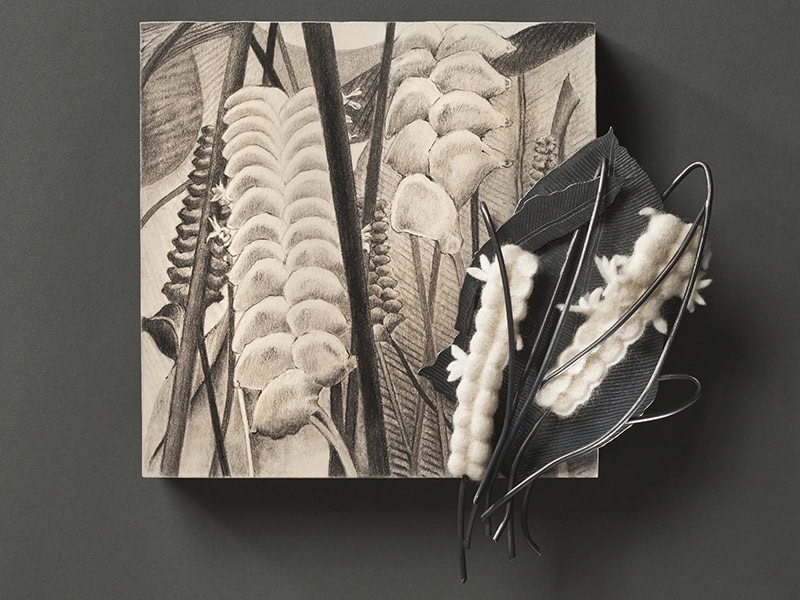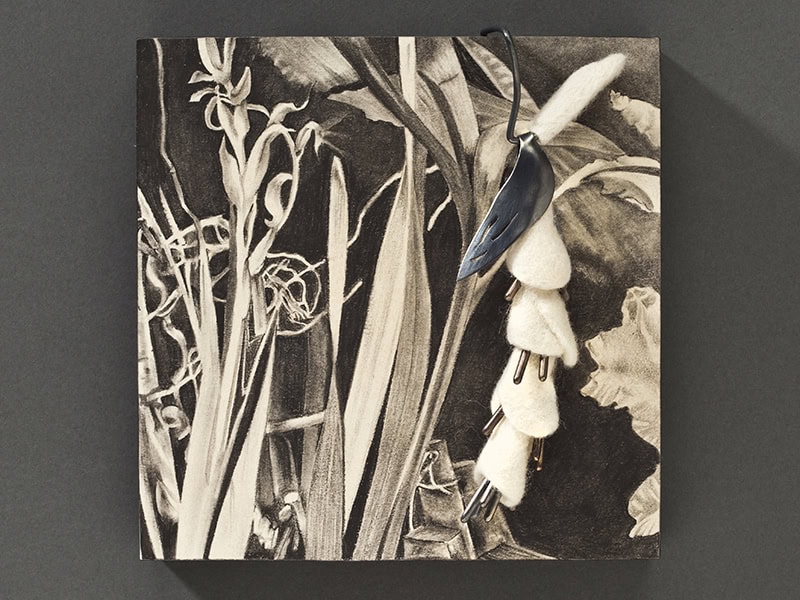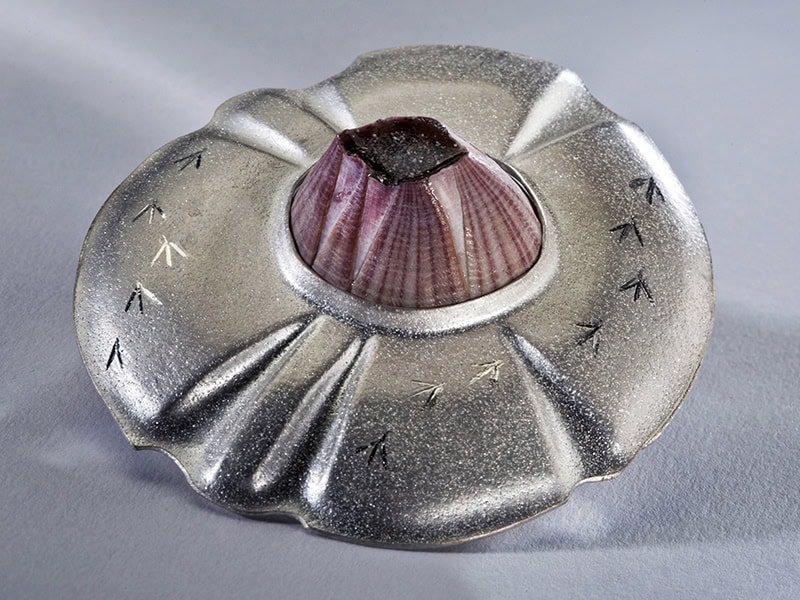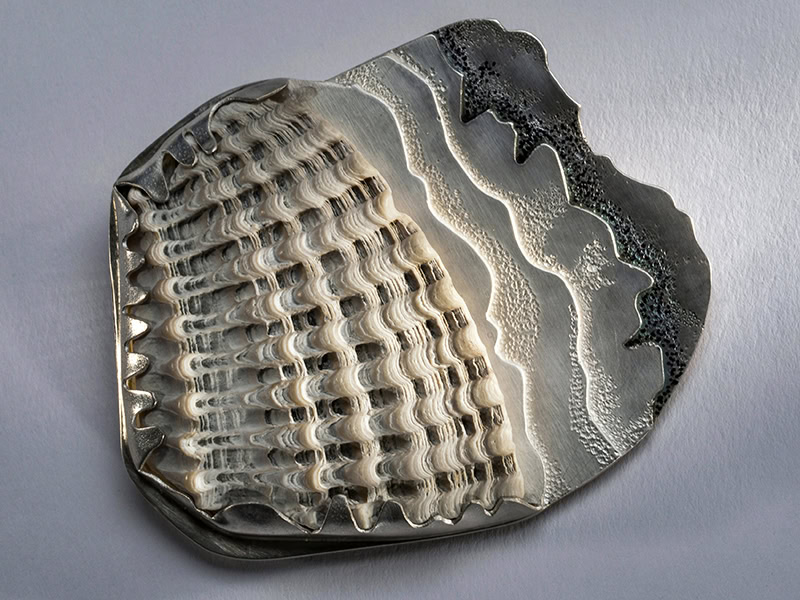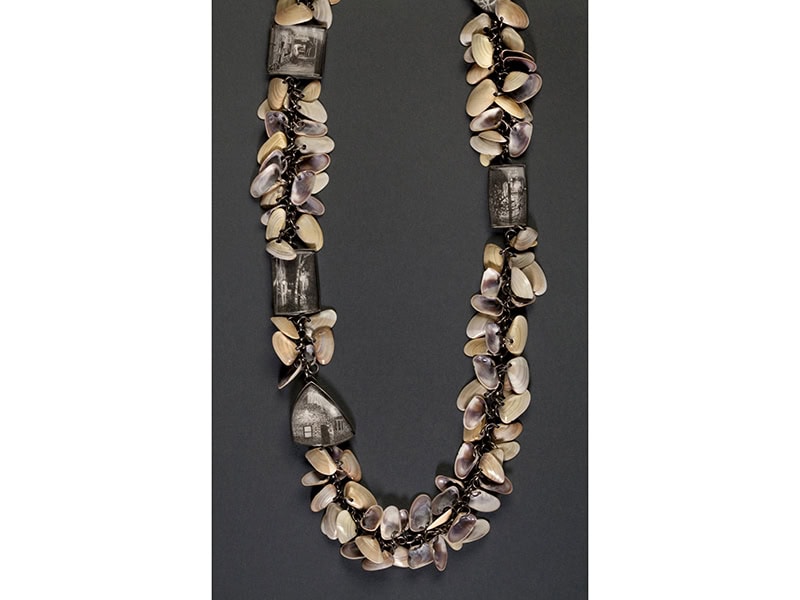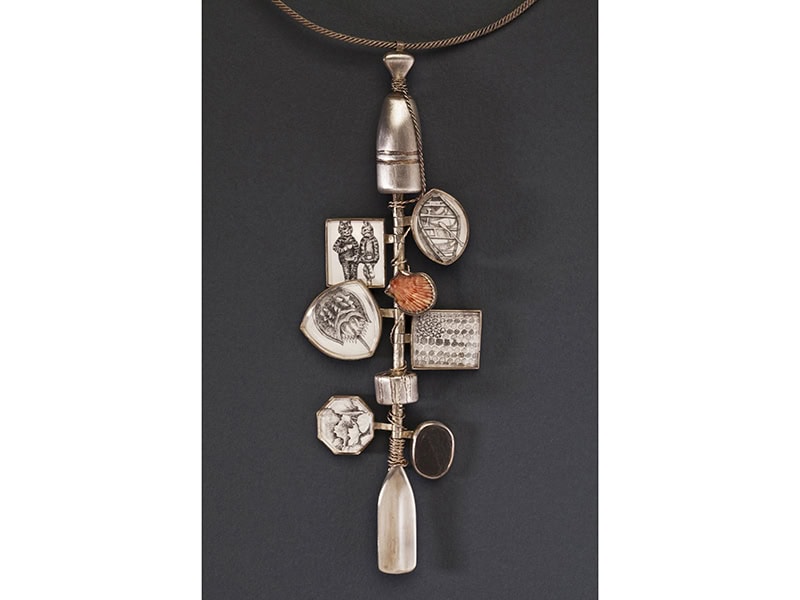- In 2024, the American Craft Council recognized Watson for her outstanding contribution to the crafts by selecting her to join their College of Fellows
- She has received two National Endowment for the Arts Individual Artist Grants
- The Metal Museum designated her as its Master Metalsmith in 2022

Watson earned her associate’s degree in advertising design from Orange Coast College in 1961. She earned a BA in general craft, in 1966, and an MA, in 1969, from California State University, Long Beach (CSULB). Watson accepted a teaching position at Cabrillo College, in Aptos, CA, in 1970. She earned her MFA from CSULB while taking a leave of absence in 1977. For 25 years, she was a full-time tenured instructor at Cabrillo and head of the Jewelry/Metals Program, which she had built.
Watson was selected as Santa Cruz County’s Artist of the Year in 1998. She has exhibited her work both nationally and internationally and is in prominent collections including the Renwick Gallery of the Smithsonian Institution and the Museum of Arts and Design, in New York.
Kris Patzlaff: After receiving your MA, you accepted a position at Cabrillo College with a teaching load of four large studio classes per semester. You also served the college in other leadership roles including participating in union negotiations. How did you manage to have studio time?
Lynda Watson: My choice, because of student diversity, was to teach at a California community college. I tried to keep myself unencumbered so I could reduce my teaching load when I felt necessary. My work with our union succeeded in doing that. I needed to produce work because Cabrillo required a professional growth report each year, but more importantly because of my involvement with SNAG and my gallery contacts. Studio time was always hard to find, and my best work was almost always done when I was not teaching full time.
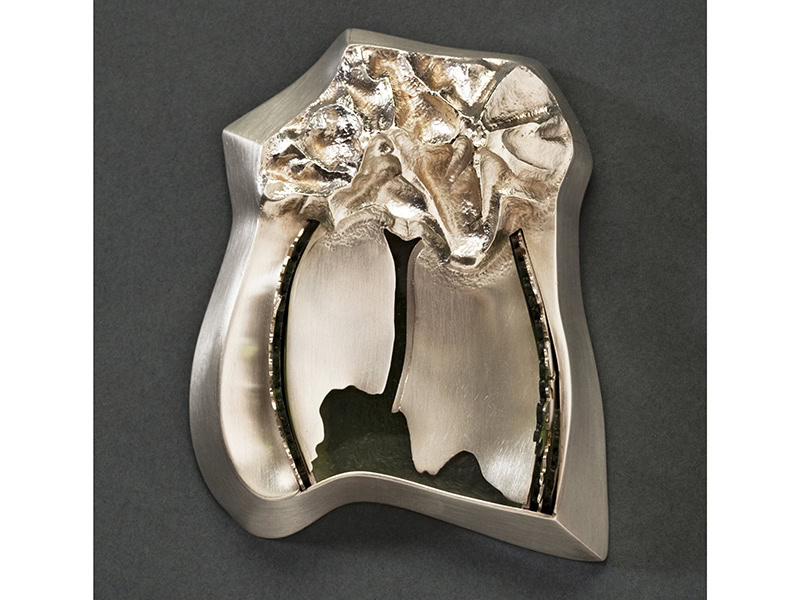
Your work is narrative and often referred to as a personal diary. In your earlier work your pieces are abstracted documentations of your life and surroundings. Later, they became more literal or representative in execution. Speak to this evolution. And how has travel played a role?
Lynda Watson: I have always used places as metaphors for memorable times. The brooch Colorado Summers is a good example of a number of pieces made before 2000. The imagery used in this piece is referential and comes from a long view. It is a composite of images collected over time and is about a place where I spent a number of summers. It doesn’t refer to a specific event like many of the later pieces do. My need to make work about specific times in places came later, when I wanted to remember certain aspects about a particular experience or event. I consider this later work more personal, more like a diary entry.
Your studio work often falls into a series of pieces. Please share how this developed. Do you have a favorite series? Tell us about the Cappadocia series and the COVID Beach Walks series.
Lynda Watson: Almost every piece I start could become a series, if there is enough information that I want to pass along. The Hawaiian Flora series came from photos and drawings of native plants that I had collected from various Hawaiian islands over the years. I had been working with felted wool in combination with silver and this was perfect for creating the floral shapes, but they needed context. The background drawings were done to provide that, and the addition of neckbands and attachments allowed them to be displayed on the drawings and removed for wearing. This is one of my favorite series because I was able to use my favorite materials and processes on each piece: needle-felted wool, fabricated silver, and a charcoal drawing.
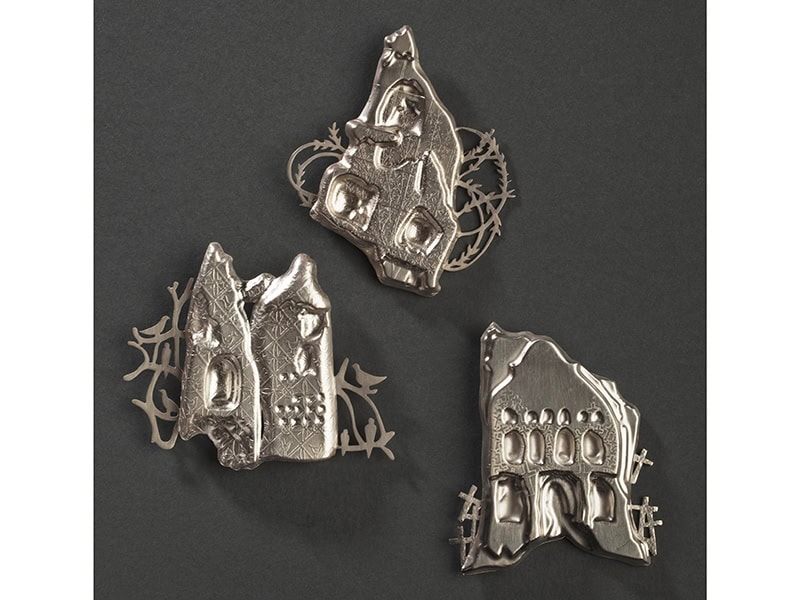
The Cappadocia series started with a very interesting trip to Cappadocia, which is on the eastern edge of Turkey. Structures of all sorts were built into the caves and hillsides thousands of years ago. Reproducing the “look” of these structures as brooches presented a technical and aesthetic challenge to me. I carefully built a Plexiglas replica of one structure and, using fine silver that had been roll-printed with surface details, employed the hydraulic press to form the sheet over the Plexiglas matrix. It worked beautifully, and resulted in two more pieces, different in form and surface, but very Cappadocia.
The COVID Beach Walks pieces are from three different sources which were found or occurred in one place: a beautiful pink barnacle, an event (the residue from fires in the Santa Cruz mountains), and the everyday activities of the sanderling birds on the beach. All of these told stories about weekly walks with my friends on Seascape Beach during the COVID lockdown.
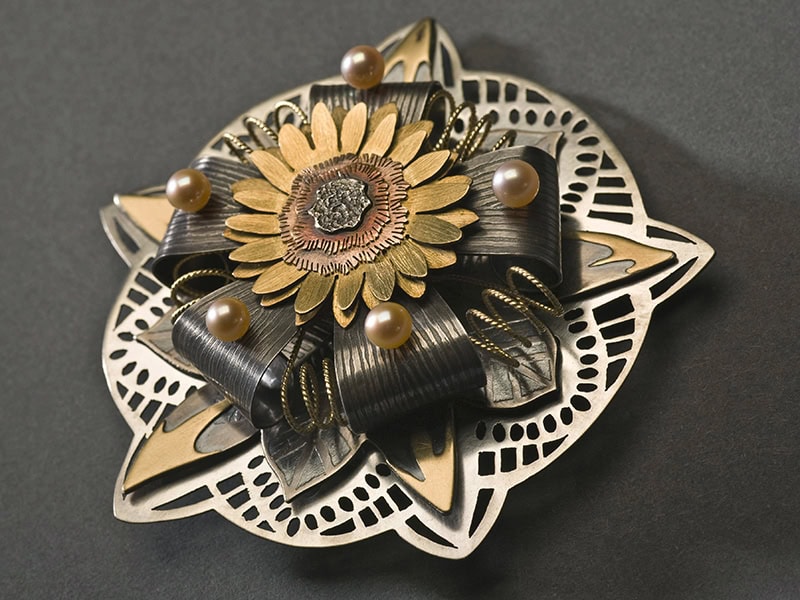
Around 2000, found objects became more prominent in your work. How did this develop?
Lynda Watson: I remember a very obvious change around that time. I was single, retired, and had big travel plans. My work became very specific to places and events, and I started collecting found things to represent and remember them. I also started using small drawings in my work to add detail. I had regained the full use of my hands, which had been damaged from teaching. I was fully able to make what I envisioned and was enjoying it tremendously! While I liked to share my work with others, I was really recording my own stories for myself.
Your career in the world of jewelry spans over 50 years. Is there a certain period that you think of as the most rewarding?
Lynda Watson: Without a doubt, it is the time from about 2000 to 2015. I traveled, here and abroad, collecting objects or images and making work as soon as I returned. Travel provided me with adventurous possibilities, and having a dear friend who enjoyed making affordable travel arrangements made it comfortable and easy. There is an intense focus that happens with exposure to new places and experiences. My life during these years was what I hoped for when I finished college.
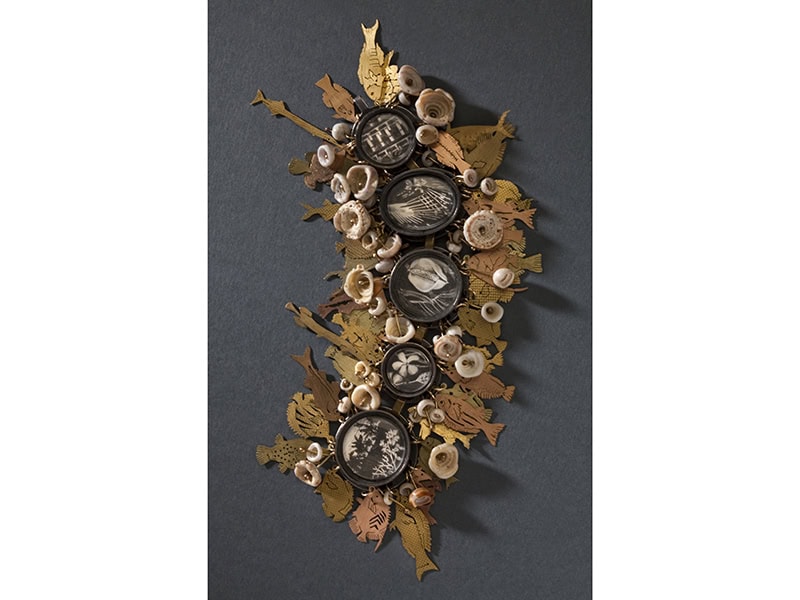
You have served the arts community of Santa Cruz County in many ways. You served on its Arts Council Board and on the Tannery Arts Center Board. How did these experiences inform your work and practice?
Lynda Watson: I came to Santa Cruz in 1970 and was able to buy property soon after and build a studio. That was not the case for many of the artists and students who came after me. My involvement with the various nonprofits primarily concerned artist housing and workspace. It was about giving back to a community that had supported me, while initiating or maintaining contact with the many members of a wonderful creative community.

You created a piece titled Looking Back in 2020 for your retrospective exhibition at the Metal Museum in Memphis, TN. How are you looking forward?
Lynda Watson: I am looking forward to spending lots of unscheduled time in the studio to both draw and make jewelry. I will continue to use my experiences and their locations to inform new work. Now, in my mid-80s, I am slowing down a bit to make more time for walking and other activities with friends and family. I do appreciate all of the good times I have had and those yet to come.

We welcome your comments on our publishing, and will publish letters that engage with our articles in a thoughtful and polite manner. Please submit letters to the editor electronically; do so here.
© 2024 Art Jewelry Forum. All rights reserved. Content may not be reproduced in whole or in part without permission. For reprint permission, contact info (at) artjewelryforum (dot) org


